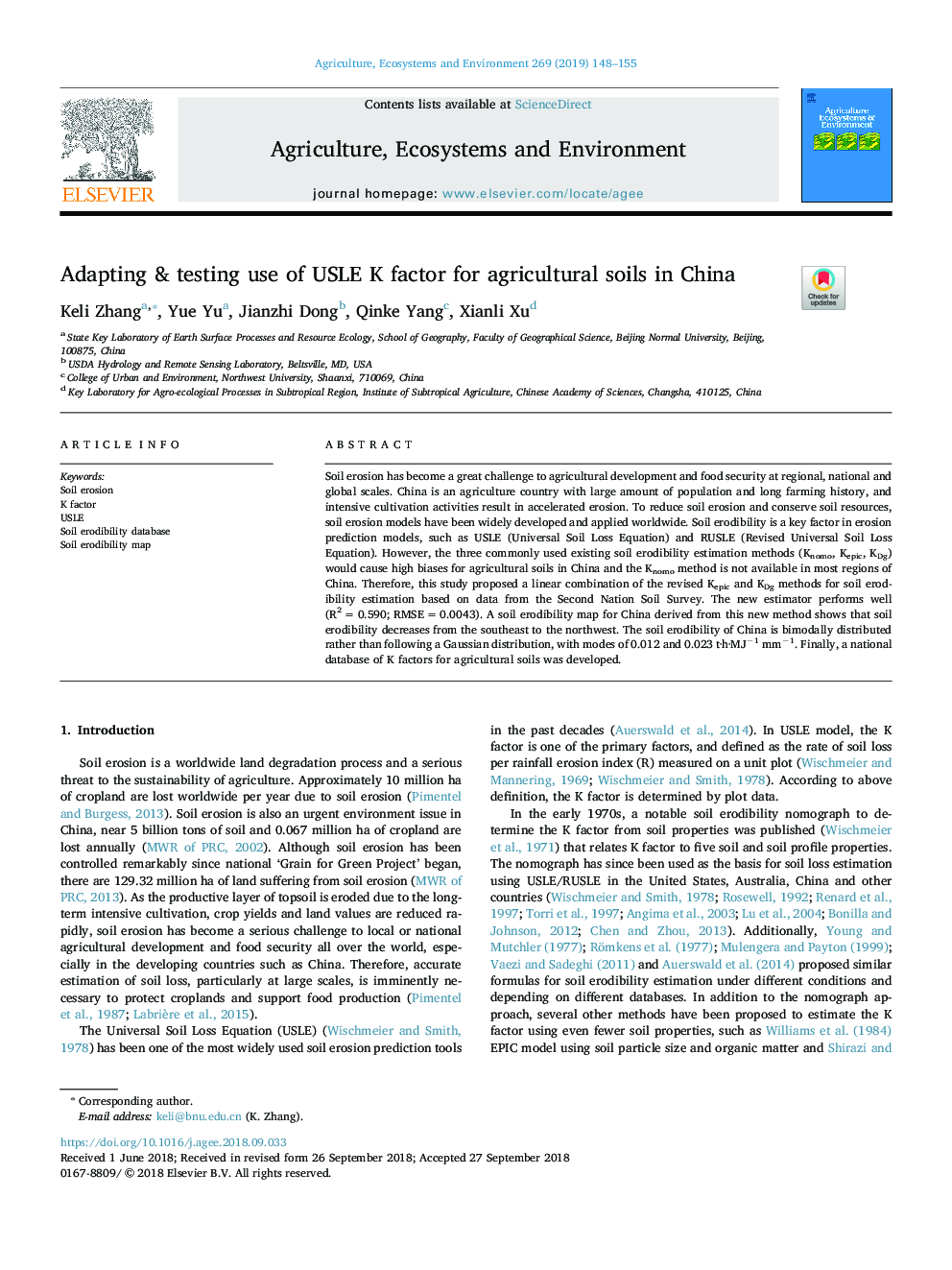| کد مقاله | کد نشریه | سال انتشار | مقاله انگلیسی | نسخه تمام متن |
|---|---|---|---|---|
| 11001825 | 1104192 | 2019 | 8 صفحه PDF | دانلود رایگان |
عنوان انگلیسی مقاله ISI
Adapting & testing use of USLE K factor for agricultural soils in China
دانلود مقاله + سفارش ترجمه
دانلود مقاله ISI انگلیسی
رایگان برای ایرانیان
کلمات کلیدی
موضوعات مرتبط
علوم زیستی و بیوفناوری
علوم کشاورزی و بیولوژیک
علوم زراعت و اصلاح نباتات
پیش نمایش صفحه اول مقاله

چکیده انگلیسی
Soil erosion has become a great challenge to agricultural development and food security at regional, national and global scales. China is an agriculture country with large amount of population and long farming history, and intensive cultivation activities result in accelerated erosion. To reduce soil erosion and conserve soil resources, soil erosion models have been widely developed and applied worldwide. Soil erodibility is a key factor in erosion prediction models, such as USLE (Universal Soil Loss Equation) and RUSLE (Revised Universal Soil Loss Equation). However, the three commonly used existing soil erodibility estimation methods (Knomo, Kepic, KDg) would cause high biases for agricultural soils in China and the Knomo method is not available in most regions of China. Therefore, this study proposed a linear combination of the revised Kepic and KDg methods for soil erodibility estimation based on data from the Second Nation Soil Survey. The new estimator performs well (R2â=â0.590; RMSEâ=â0.0043). A soil erodibility map for China derived from this new method shows that soil erodibility decreases from the southeast to the northwest. The soil erodibility of China is bimodally distributed rather than following a Gaussian distribution, with modes of 0.012 and 0.023ât·h·MJâ1âmmâ1. Finally, a national database of K factors for agricultural soils was developed.
ناشر
Database: Elsevier - ScienceDirect (ساینس دایرکت)
Journal: Agriculture, Ecosystems & Environment - Volume 269, 1 January 2019, Pages 148-155
Journal: Agriculture, Ecosystems & Environment - Volume 269, 1 January 2019, Pages 148-155
نویسندگان
Keli Zhang, Yue Yu, Jianzhi Dong, Qinke Yang, Xianli Xu,